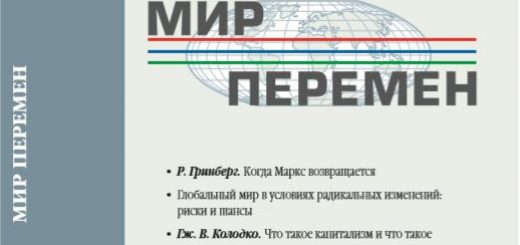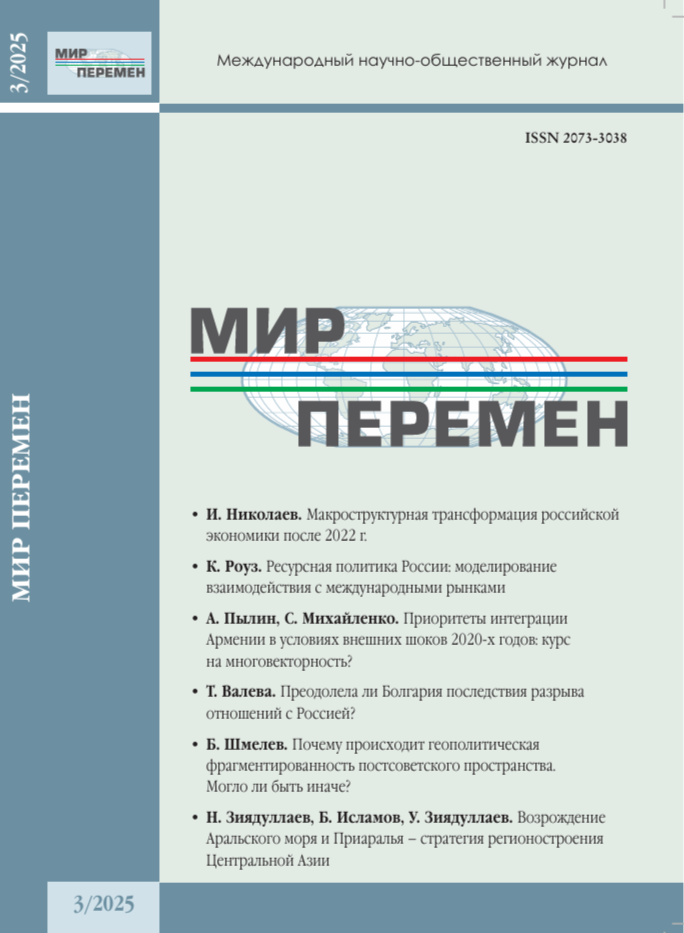Мир перемен. 2025. № 1
М. Шерстнев. Особенности долларизации в странах СНГ
УДК: 336.743.4.
EDN: GACWFB
DOI: 10.51905/2073-3038_2025_1_86
Рыночная трансформация бывших социалистических стран, сопровождавшаяся открытием их внешнему миру, в числе различных экономических эффектов породила феномен долларизации, то есть использование резервных валют – прежде всего доллара США – во внутренних хозяйственных процессах для выполнения различных функций денег. В данной статье предпринята попытка осмыслить специфику феномена долларизации в странах СНГ после завершения начального этапа преобразований и выхода из трансформационного спада в свете современных теоретико-методологических разработок и накопленного практического опыта других стран и регионов, прежде всего стран Латинской Америки.
Проведенное исследование показало, что роль резервных валют и в первые десятилетия XXI в. оставалась весомой для этой группы стран относительно масштабов их экономики. На материалах Российской Федерации дополнительно показано, что рост уровня долларизации обусловлен усилением макроэкономической нестабильности, прежде всего повышением уровня внутренней инфляции, которая идет вместе со снижением курса национальной валюты и повышением курсовой волатильности. Опыт стран СНГ подтверждает, что для снижения уровня долларизации экономики ключевую роль играет макроэкономическая стабильность и стабильность ожиданий хозяйственных агентов. Специфика дедолларизации в РФ в начале 2020-х годов обусловлена сочетанием уникальных внешних факторов.
Ключевые слова: долларизация, функции денег, макроэкономическая нестабильность, СНГ.
Михаил Анатольевич Шерстнев – кандидат экономических наук, доцент Института экономики и управления Самарского университета (г. Самара).
M. Sherstnev. Features of Dollarization in the CIS Countries
Annotation. The market transformation of the former socialist countries, accompanied by their opening to the outside world, among different economic effects, gave rise to the phenomenon of dollarization, i.e. the use of reserve currencies – primarily the US dollar – in internal economic processes to perform different functions of money. This article attempts to understand the specifics of the dollarization phenomenon in the CIS countries after the completion of the initial stage of transformations and the exit from the transformational recession in the light of contemporary theoretical and methodological developments and the accumulated practical experience of other countries and regions, first of all Latin American countries.
The study conducted showed that the role of reserve currencies in the first decades of the 21st century had remained significant for this group of countries, relative to the scale of their economies. Using materials from the Russian Federation, it is additionally shown that the growth of the dollarization level is due to increased macroeconomic instability, primarily an increase in the level of domestic inflation, which goes along with the depreciation of the national currency and an increase in exchange rate volatility. The experience of the CIS countries confirms that macroeconomic stability and stability of expectations of economic agents play a key role in reducing the level of dollarization of the economy. The specifics of de-dollarization in the Russian Federation in the early 2020s are due to a combination of unique external factors.
Keywords: dollarization, functions of money, macroeconomic instability, CIS
Mikhail A. Sherstnev – a Candidate of Economic Sciences and Associate Professor at the Institute of Economics and Management at Samara University (Samara).








